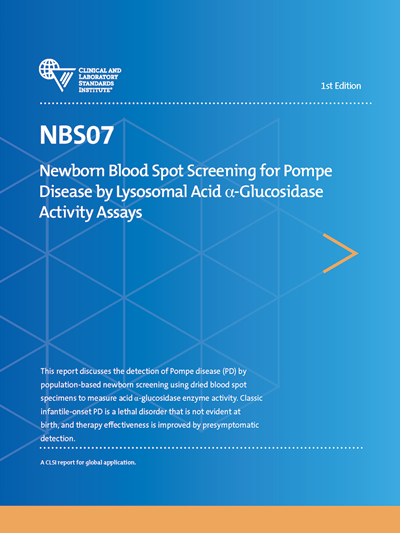CLSI NBS07
Newborn Blood Spot Screening for Pompe Disease by Lysosomal Acid α-Glucosidase Activity Assays, 1st Edition
Classic infantile-onset Pompe disease is a lethal disorder not evident at birth. Outcomes are improved by presymptomatic detection. Learn about measuring acid α-glucosidase enzyme activity to detect Pompe disease.
This reaffirmed document has been reviewed and confirmed as suitable to remain published without revision to content, as of June 2022. The document’s next scheduled review is generally five years after the reaffirmation date.
Member price:
List Price:Details
Chairholder: Joseph Orsini, PhD and C. Ronald Scott, MD
Date of Publication: March 30, 2017
Order Code PDF: CLSI NBS07Ed1E
ISBN Number: 1-56238-815-0
Order Code Print: CLSI NBS07Ed1
ISBN Number: 1-56238-814-2
Edition: First
Pages: 70

